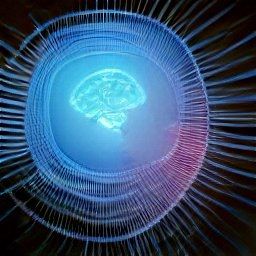What is Deep Learning?

Artificial Intelligence has now become a prime resource in an ever growing digital world, and one component that is helping to drive these developments is Deep Learning, which has become increasingly valuable in recent years. Also known as end-to-end learning, Deep Learning is a subtype of Machine Learning (this links AI and Deep Learning together) which directly uses data to learn different features and tasks, including speech and facial recognition, predicting house prices and even natural language processing. There is less manual work involved in Deep Learning because Machine Learning follows steps in order for something to be recognised, whilst Deep Learning has an algorithm which enables it to predict the object.
Before we discuss anything further, what exactly is Machine Learning? Well, it is a type of AI which includes systems that can learn from data, identify patterns and make decisions without much help from humans.
An example of deep learning at work
There has been a recent trend on social media where people have used applications where AI has been used to create unique and one-of-a-kind images with only one phrase. An example is a photo below where I have typed in “artificial intelligence, deep learning and machine learning” into Dall-E Mini - some images I have seen before are quite abstract. This made me question how AI was capable of doing this, which led me to this.

What mechanism does deep learning use?
Deep Learning refers to training neural networks where an input (x) is linked to a ‘neuron’ - also known as neural units: each of them takes in all input features - and creates an output (y). An example of this is housing price predictions: an input might be the number of bedrooms a house has, and the output could be the price. Despite this, there can be multiple inputs in a neural network which then makes it larger, meaning that more neural units are involved.
Following the example of object detection, if you do not have enough images to put into an algorithm for deep learning, it is better to use other forms of simpler machine learning because it is less complex. Deep learning will often need more than 1000 photos to make sure the results are reliable. If you ask for a deep learning algorithm to detect a cat photo when you have only given it ten cat photos, it may not pick it up. This means that the algorithm will need a lot of time to be trained in recognising objects, and this process will have to be repeated to make the accuracy very high. This process mimics the human brain as it learns to spot the differences between objects over time and experience, saving us a lot of time from doing more difficult tasks.
Neural network architectures are mainly used in deep learning, and CNN (convolutional neural network) is often used for image detection, so it has become quite popular, even in the use of unlocking phones. By scanning your face at different angles, a CNN can find out the distances between your chin, eyes and nose and will change that into a mathematical way for computers to understand. Though there are other aspects to CNN, this helps to make a ‘face template’ that is individual to you, allowing fewer people to hack into phones.
Factors that have helped Deep Learning to grow
Three factors have caused deep learning to surge, including the fact that GPUs (Graphics Processing Unit) help us to train deep networks in less time, as well as labelled data being more accessible in larger quantities. Now that algorithms have had a lot of training, they are more accurate in categorising objects.
Labelled data is very important in deep learning because this makes sure that the algorithm knows what specific features different objects have. Going back to the cat example, if we try to find the physical differences between a cat and a dog, a cat will have more pointy ears (depending on breed), and they generally have different eye and nose shapes. Currently, it is estimated that 2.6 quintillion bytes of data are generated every day, and this is what allows Deep Learning to thrive.
Conclusions
Deep learning is a type of machine learning that uses a similar learning technique to a human brain to categorise different objects from large data sets. Data can be images, audio or text, and it repeats training to become more familiar with distinguishing similarities and differences in objects. Though it is fairly new, it will benefit the human race in making more and more advances in technology for years to come. You never know, one day, you might be driving a car that uses CNN to open it.
References
Electronic Frontier Foundation. (2017). Face Recognition. [online] Available at: https://www.eff.org/pages/face-recognition#:~:text=Face%20recognition%20systems%20use%20computer [Accessed 18 Jul. 2022].
Giger, M. and Pritzker, A. (2019). CAD, Radiomics, and AI in Breast Imaging. [online] Available at: https://www.icpme.us/courses/CIBC_PDF/4.1%20CAD_Radiomics_and%20AI%20in%20Breast%20Imaging_Giger.pdf [Accessed 18 Jul. 2022].
Marr, B. (2021b). What Is Deep Learning AI? A Simple Guide With 8 Practical Examples. [online] Bernard Marr. Available at: https://bernardmarr.com/what-is-deep-learning-ai-a-simple-guide-with-8-practical-examples/ [Accessed 18 Jul. 2022].
uk.mathworks.com. (n.d.). Introduction to Deep Learning: Machine Learning vs. Deep Learning Video. [online] Available at: https://uk.mathworks.com/videos/introduction-to-deep-learning-machine-learning-vs-deep-learning-1489503513018.html?ef_id=CjwKCAjwrNmWBhA4EiwAHbjEQIG8k-TLP0k5w6dqPuDfcFLyU30En7DQZrNX2k_Ba66-JxnXXD9iIxoCPUgQAvD_BwE:G:s&s_kwcid=AL [Accessed 18 Jul. 2022].
uk.mathworks.com. (n.d.). Introduction to Deep Learning: What Is Deep Learning? Video. [online] Available at: https://uk.mathworks.com/videos/introduction-to-deep-learning-what-is-deep-learning--1489502328819.html?s_tid=vid_pers_recs [Accessed 18 Jul. 2022].
www.youtube.com. (n.d.). C1W1 Introduction to Deep Learning. [online] Available at: https://youtu.be/zQY2YvkMbHI?list=PLkRLdi-c79HKEWoi4oryj-Cx-e47y_NcM [Accessed 18 Jul. 2022].
Author Biography
Nicole Phan was born in 2005 in London and currently resides in Hull, where she studies Mathematics, Further Mathematics, French and English Literature at college. She delves deep into her studies, ensuring that a high work ethic is involved at all times. She also enjoys challenging herself outside of the academic realm, including playing tennis, playing the piano and trumpet, volunteering within the community and even participating in the Duke of Edinburgh Gold Award. Currently, her main aim is to study computer science at a university in either in the UK or USA.

Cite this article as:
Nicole Phan, What is Deep Learning?, theCircle Composition, Volume 3, (2022). https://theCircleComposition.org/what-is-deep-learning/
